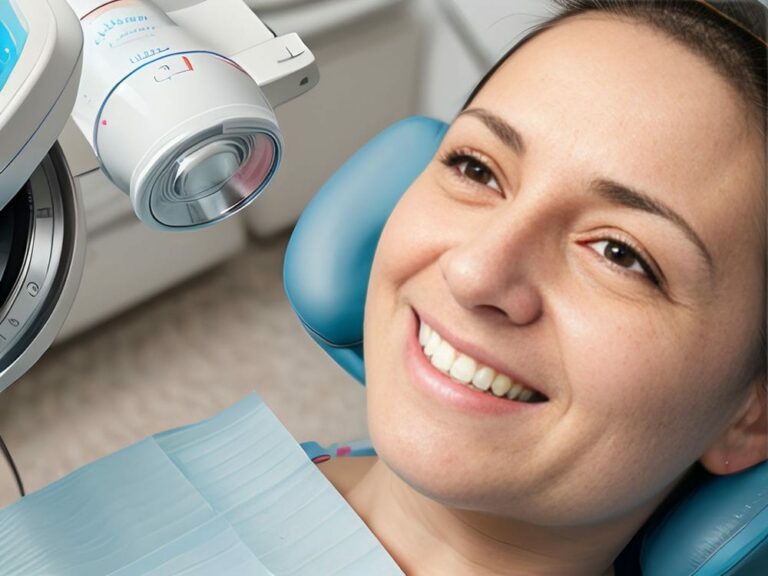Understanding Dental Fear: Exploring the Psychology behind Anxiety in Dentistry
Understanding Dental Fear: Exploring the Psychology behind Anxiety in Dentistry
For many people, a trip to the dentist can evoke feelings of anxiety and fear. This dental fear, also known as dental phobia or odontophobia, is a common condition that affects a significant portion of the population. The fear may stem from various factors, such as previous traumatic experiences, fear of pain or needles, or a general feeling of loss of control. Understanding the psychology behind dental fear can help both patients and dental professionals address this issue effectively.
One reason for dental fear is the anticipation of pain during dental procedures. Many people associate dentistry with discomfort and invasive procedures. This perception can be exacerbated by past negative experiences or stories heard from others. The fear of pain triggers anxiety and can make even routine appointments seem daunting.
Another contributing factor to dental fear is a sense of loss of control. When sitting in the dentist’s chair, patients often feel vulnerable and at the mercy of the dentist’s actions. This lack of control over their own oral health can intensify anxiety and make it difficult for individuals to relax during their appointment.
Moreover, some individuals may have an underlying fear of needles or injections commonly used in dentistry. The sight or thought of needles can trigger panic attacks or extreme distress in these individuals. This fear may be rooted in childhood experiences or developed later in life due to negative associations with needles.
To address these psychological barriers, dentists have developed advanced sedation methods to help patients overcome their fears and anxieties. Oral sedatives are commonly prescribed to create a relaxed state while still allowing patients to remain conscious throughout their dental treatment. These medications help reduce anxiety levels and provide a sense of calmness during procedures.
In conclusion, understanding the psychology behind dental fear is crucial for addressing this common issue faced by many individuals. By recognizing that factors such as anticipation of pain, loss of control, and fear of needles contribute to dental anxiety, dental professionals can tailor their approach to provide a more comfortable and relaxed experience for their patients. Utilizing advanced sedation methods like oral sedatives can further enhance the patient’s ability to overcome their fears and receive necessary dental care.
Identifying Different Levels of Dental Fear: How to Recognize if You Are a Fearful Patient
Dental fear, also known as dental phobia or odontophobia, is a common condition that affects many people. This fear can be triggered by various factors, such as the anticipation of pain during dental procedures, a sense of loss of control, or a fear of needles. These psychological barriers can make routine dental appointments seem daunting and can prevent individuals from seeking necessary dental care.
To help patients overcome their fears and anxieties, dentists have developed advanced sedation methods. One commonly used method is oral sedation, where patients are prescribed medications to create a relaxed state while still remaining conscious during their treatment. This helps reduce anxiety levels and provides a sense of calmness during procedures.
Another sedation method used in dentistry is nitrous oxide, commonly known as laughing gas. Nitrous oxide is inhaled through a mask and helps patients feel more relaxed and at ease during their dental appointment. It has been proven to effectively reduce anxiety and allow patients to undergo necessary dental procedures comfortably.
For individuals with severe dental fear or those requiring more complex procedures, intravenous (IV) sedation may be used. IV sedation involves the administration of medication directly into the bloodstream, inducing a deeper level of relaxation or even sleep during the procedure. This method is closely monitored by trained professionals to ensure patient safety.
Overall, advanced sedation methods like oral sedatives, nitrous oxide, and IV sedation provide options for fearful patients to receive necessary dental care in a comfortable and relaxed state. By understanding these options and discussing them with their dentist, individuals can overcome their fears and maintain good oral health without unnecessary stress or anxiety.
Exploring Traditional Sedation Methods in Dentistry: An Overview of Local Anesthesia and Nitrous Oxide
Dental fear, also known as dental phobia or odontophobia, affects many people and can be triggered by various factors such as the anticipation of pain during dental procedures, a sense of loss of control, or a fear of needles. This fear can make routine dental appointments seem daunting and prevent individuals from seeking necessary dental care. However, dentists have developed advanced sedation methods to help patients overcome their fears and anxieties.
One commonly used sedation method is oral sedation, where patients are prescribed medications that create a relaxed state while still remaining conscious during their treatment. This helps reduce anxiety levels and provides a sense of calmness during procedures. Oral sedation is an effective option for many fearful patients who need dental care but are anxious about the experience.
Another sedation method used in dentistry is nitrous oxide, commonly known as laughing gas. Nitrous oxide is inhaled through a mask and helps patients feel more relaxed and at ease during their dental appointment. It has been proven to effectively reduce anxiety and allow patients to undergo necessary dental procedures comfortably. Nitrous oxide is a safe and widely used method that provides relaxation without putting the patient to sleep.
For individuals with severe dental fear or those requiring more complex procedures, intravenous (IV) sedation may be used. IV sedation involves the administration of medication directly into the bloodstream, inducing a deeper level of relaxation or even sleep during the procedure. This method is closely monitored by trained professionals to ensure patient safety. IV sedation is an excellent option for those who experience extreme anxiety or require extensive dental work.
Overall, advanced sedation methods like oral sedatives, nitrous oxide, and IV sedation provide options for fearful patients to receive necessary dental care in a comfortable and relaxed state. These methods not only help manage anxiety but also assist with pain management during procedures. By discussing these options with their dentist, individuals can overcome their fears and maintain good oral health without unnecessary stress or anxiety.
Going Beyond Traditional Methods: The Advantages of Advanced Sedation Techniques in Overcoming Dental Fear
Overcoming dental fear is crucial for individuals to receive necessary dental care without anxiety or stress. Dentists have developed advanced sedation methods to help patients feel more comfortable during their appointments. These sedation methods, such as oral sedation, nitrous oxide, and IV sedation, provide options for fearful patients to undergo dental procedures in a relaxed state.
Oral sedation involves prescribing medications that induce a relaxed state while the patient remains conscious. This method helps reduce anxiety levels and provides a sense of calmness during dental procedures. It is an effective option for many fearful patients who need dental care but are anxious about the experience.
Nitrous oxide, commonly known as laughing gas, is another sedation method used in dentistry. It is inhaled through a mask and helps patients feel more relaxed and at ease during their appointments. Nitrous oxide has been proven to effectively reduce anxiety and allows patients to undergo necessary dental procedures comfortably. It is a safe and widely used method that provides relaxation without putting the patient to sleep.
For individuals with severe dental fear or those requiring more complex procedures, IV sedation may be used. This involves administering medication directly into the bloodstream, inducing a deeper level of relaxation or even sleep during the procedure. IV sedation is closely monitored by trained professionals to ensure patient safety. It is an excellent option for those who experience extreme anxiety or require extensive dental work.
Advanced sedation methods like oral sedatives, nitrous oxide, and IV sedation not only help manage anxiety but also assist with pain management during dental procedures. By discussing these options with their dentist, individuals can overcome their fears and receive necessary dental care in a comfortable and safe environment.
Intravenous Sedation: A Powerful Tool for Managing Anxiety in Dentistry
Intravenous (IV) sedation is a powerful tool that dentists use to manage anxiety in their patients. This advanced sedation method involves the administration of medication directly into the bloodstream, resulting in a reliable and effective way to induce relaxation or even sleep during dental procedures. IV sedation is closely monitored by experienced professionals to ensure patient safety throughout the entire process.
One of the advantages of IV sedation is its effectiveness in managing anxiety. For individuals with severe dental fear, this method provides a deep level of relaxation that allows them to undergo necessary dental procedures without experiencing extreme stress or panic. The medication used in IV sedation works quickly, providing almost immediate relief from anxiety and creating a comfortable environment for both the patient and dentist.
Another benefit of IV sedation is its reliability in pain management. The medication used not only helps with anxiety but also numbs any discomfort that may arise during the procedure. This ensures that patients experience minimal pain or discomfort while undergoing dental work. Additionally, since IV sedation induces a deeper state of relaxation compared to other methods, patients often have little to no memory of the procedure afterward.
By offering IV sedation as an option, dentists can provide their fearful patients with an effective and reliable solution to overcome their dental anxiety. With experienced professionals monitoring the process, patients can feel confident that they are in safe hands throughout their treatment. Overall, IV sedation offers a powerful tool for managing anxiety in dentistry, allowing individuals to receive necessary dental care without fear or stress.
Oral Conscious Sedation: Providing Relaxation and Comfort for Fearful Patients
Oral conscious sedation is another effective method dentists use to help fearful patients overcome their dental anxiety. This form of sedation involves the administration of medication in pill form that induces a calm and relaxed state in the patient. Unlike IV sedation, oral conscious sedation does not require the use of needles or injections, making it a more comfortable option for those with needle phobia.
One of the main advantages of oral conscious sedation is its convenience and ease of administration. Patients simply take a prescribed pill before their appointment, allowing them to feel relaxed by the time they arrive at the dental office. The medication used in oral conscious sedation provides a deep level of relaxation, enabling patients to undergo dental procedures without experiencing high levels of fear or discomfort.
Additionally, oral conscious sedation offers a comforting and reassuring experience for fearful patients. The professional administering the medication closely monitors the patient throughout the procedure to ensure their safety and well-being. This constant supervision helps alleviate any worries or concerns that patients may have, creating a soothing environment where they can receive necessary dental care without feeling overwhelmed.
By offering oral conscious sedation as an option, dentists can provide their fearful patients with a professional and calming experience that helps them overcome their dental anxiety. This method not only ensures patient comfort but also allows for efficient completion of dental procedures by reducing anxiety-induced complications. With proper monitoring and care, oral conscious sedation offers a reliable and effective solution for individuals who struggle with fear or stress when visiting the dentist’s office.
Inhalation Sedation with Nitrous Oxide: A Safe and Effective Option for Reducing Dental Phobia
Inhalation sedation with nitrous oxide, commonly known as laughing gas, is a gentle and tranquil option for patients who experience dental phobia. This method involves the administration of a odorless gas through a small mask placed over the patient’s nose. Nitrous oxide induces a state of deep relaxation while allowing patients to remain conscious and responsive throughout the procedure.
One of the key benefits of inhalation sedation is its safety and effectiveness. Nitrous oxide has been used in dentistry for decades and is well-known for its ability to reduce anxiety and discomfort. The gas takes effect quickly, providing immediate relaxation for patients who may be feeling nervous or fearful. Additionally, inhalation sedation can be easily adjusted by the dentist to ensure optimal comfort levels during treatment.
Furthermore, inhalation sedation offers a gentle and tranquil experience for patients with dental phobia. The calming effects of nitrous oxide help alleviate fear and stress, creating a soothing atmosphere that makes it easier for individuals to receive necessary dental care. This method also allows for efficient completion of procedures by reducing any anxiety-induced complications.
By utilizing inhalation sedation with nitrous oxide, dentists can provide their fearful patients with a safe and effective solution to overcome dental phobia. This gentle and tranquil option not only ensures patient comfort but also promotes a positive dental experience. With the ability to induce deep relaxation while maintaining consciousness, inhalation sedation allows individuals to receive necessary dental treatments without feeling overwhelmed or anxious
The Role of Deep Sedation and General Anesthesia in Overcoming Severe Dental Anxiety
The Role of Deep Sedation and General Anesthesia in Overcoming Severe Dental Anxiety
For patients with severe dental anxiety or phobia, inhalation sedation may not be enough to provide the necessary level of relaxation. In these cases, deep sedation or general anesthesia can be utilized to ensure complete comfort throughout the dental procedure. Deep sedation involves the administration of medications that induce a sleep-like state, allowing patients to remain unconscious during treatment. General anesthesia takes this a step further by completely eliminating consciousness and providing pain control.
Deep sedation and general anesthesia are typically reserved for complex or lengthy procedures that cannot be comfortably completed under other forms of sedation. These methods allow dentists to perform extensive dental work without causing distress to the patient. The use of deep sedation or general anesthesia also enables dentists to work more efficiently, as they can focus solely on the procedure at hand without worrying about patient discomfort or anxiety.
It’s important to note that deep sedation and general anesthesia should only be administered by trained professionals in a controlled environment. Dentists who offer these advanced sedation methods have undergone specialized training and possess the necessary equipment and knowledge to ensure patient safety. Prior to undergoing deep sedation or general anesthesia, patients will undergo a thorough evaluation of their medical history and may need additional preparation, such as fasting prior to the appointment.
In summary, for individuals with severe dental anxiety or phobia, deep sedation and general anesthesia offer a solution for receiving necessary dental care comfortably and safely. These advanced sedation methods provide complete relaxation and eliminate consciousness during treatment, allowing dentists to perform complex procedures efficiently while ensuring patient comfort. It is crucial for patients considering these options to consult with a qualified dentist who can assess their individual needs and determine the most appropriate form of sedation for their specific situation.
Choosing the Right Sedation Method for You: Factors to Consider for Individualized Treatment
The decision to undergo deep sedation or general anesthesia for dental treatment should be carefully considered and personalized to each individual’s needs. There are several factors to take into account when choosing the right sedation method:
Firstly, the complexity and duration of the dental procedure play a significant role in determining the appropriate sedation method. Deep sedation and general anesthesia are typically reserved for more intricate or lengthy procedures that may cause discomfort or anxiety if performed under other forms of sedation. It is important to discuss with your dentist the specific details of your treatment plan to determine if deep sedation or general anesthesia is necessary.
Secondly, the level of dental anxiety or phobia experienced by the patient should be taken into consideration. If you have severe dental fear, deep sedation or general anesthesia may be more suitable as they provide complete relaxation and unconsciousness during treatment. However, it is important to communicate your fears and concerns with your dentist so they can make an informed decision about which sedation method will best alleviate your anxiety.
Lastly, any existing medical conditions or medications being taken should be discussed with your dentist prior to undergoing deep sedation or general anesthesia. Certain medical conditions may require additional precautions or adjustments in the administration of sedatives. Your dentist will conduct a thorough evaluation of your medical history to ensure it is safe for you to undergo these advanced sedation methods.
By taking into account these factors and consulting with a qualified dentist, you can make an informed decision about which sedation method is right for you. Remember, deep sedation and general anesthesia should only be administered by trained professionals in a controlled environment to ensure patient safety. Your dentist will work closely with you to determine the most appropriate form of sedation for your specific situation, allowing you to receive necessary dental care comfortably and safely without fear or anxiety.
The Importance of a Trusting Relationship with Your Dentist in Overcoming Dental Fear
The decision to undergo deep sedation or general anesthesia for dental treatment should be carefully considered and personalized to each individual’s needs. There are several factors to take into account when choosing the right sedation method.
Firstly, the complexity and duration of the dental procedure play a significant role in determining the appropriate sedation method. Deep sedation and general anesthesia are typically reserved for more intricate or lengthy procedures that may cause discomfort or anxiety if performed under other forms of sedation. It is important to discuss with your dentist the specific details of your treatment plan to determine if deep sedation or general anesthesia is necessary.
Secondly, the level of dental anxiety or phobia experienced by the patient should be taken into consideration. If you have severe dental fear, deep sedation or general anesthesia may be more suitable as they provide complete relaxation and unconsciousness during treatment. However, it is important to communicate your fears and concerns with your dentist so they can make an informed decision about which sedation method will best alleviate your anxiety.
Lastly, any existing medical conditions or medications being taken should be discussed with your dentist prior to undergoing deep sedation or general anesthesia. Certain medical conditions may require additional precautions or adjustments in the administration of sedatives. Your dentist will conduct a thorough evaluation of your medical history to ensure it is safe for you to undergo these advanced sedation methods.
By taking into account these factors and consulting with a qualified dentist, you can make an informed decision about which sedation method is right for you. Deep sedation and general anesthesia should only be administered by trained professionals in a controlled environment to ensure patient safety. Your dentist will work closely with you to determine the most appropriate form of sedation for your specific situation, allowing you to receive necessary dental care comfortably and safely without fear or anxiety.
FAQs
Q: What is dental fear?,
A: Dental fear is an intense fear or anxiety that individuals experience before or during dental procedures.,
Q: What causes dental fear?,
A: Dental fear can be caused by various factors such as previous traumatic dental experiences, fear of pain or needles, fear of loss of control, or fear of the unknown.,
Q: How can dental fear affect a person’s oral health?,
A: Dental fear can lead to avoidance of dental visits, resulting in neglected oral health, untreated dental problems, and potential worsening of existing dental conditions.,
Q: What are some common signs and symptoms of dental fear?,
A: Common signs and symptoms of dental fear include increased heart rate, difficulty breathing, feeling dizzy or faint, sweating, and panic attacks.,
Q: What are sedation methods used in dentistry?,
A: Sedation methods used in dentistry include nitrous oxide (laughing gas), oral sedation (anti-anxiety pills), intravenous (IV) sedation, and general anesthesia.,
Q: How does nitrous oxide work as a sedation method?,
A: Nitrous oxide, also known as laughing gas, is inhaled through a mask and helps to induce a relaxed and euphoric state while reducing anxiety and pain perception.,
Q: What are the benefits of oral sedation for dental fear?,
A: Oral sedation involves taking anti-anxiety pills before the dental procedure, which helps to reduce anxiety, induce relaxation, and make the procedure more comfortable for the patient.,
Q: How does intravenous (IV) sedation work in dentistry?,
A: IV sedation is administered directly into the bloodstream, inducing a deeply relaxed and sleepy state, allowing the patient to remain conscious but unaware of the procedure.,
Q: Is general anesthesia commonly used for dental procedures?,
A: General anesthesia is usually reserved for complex dental procedures or surgeries that require the patient to be completely unconscious and have no memory of the procedure.,
Q: Are there any risks or side effects associated with dental sedation methods?,
A: While dental sedation methods are generally safe, there can be risks and side effects such as allergic reactions, nausea, drowsiness, or complications if not administered properly. It is important to discuss these risks with your dentist before undergoing sedation.




















